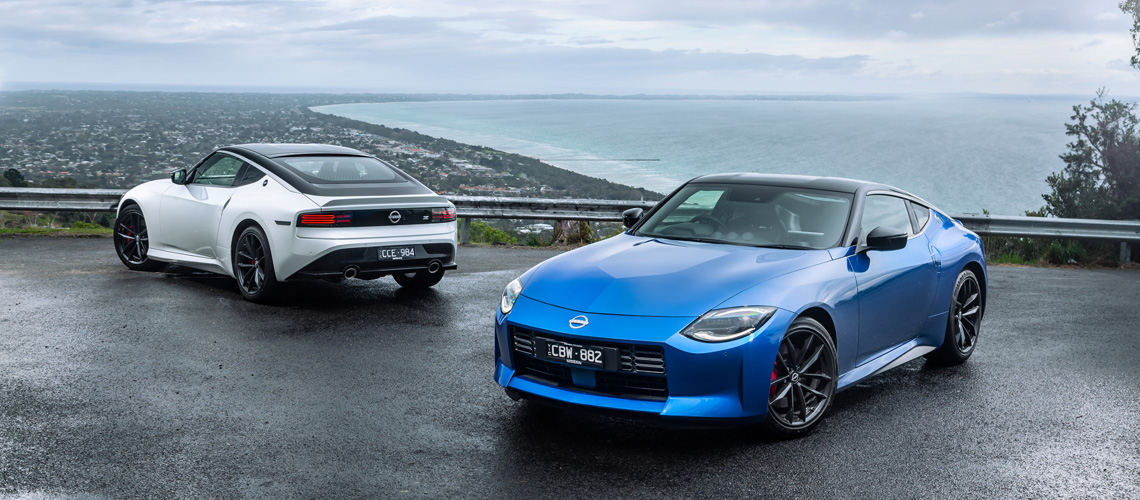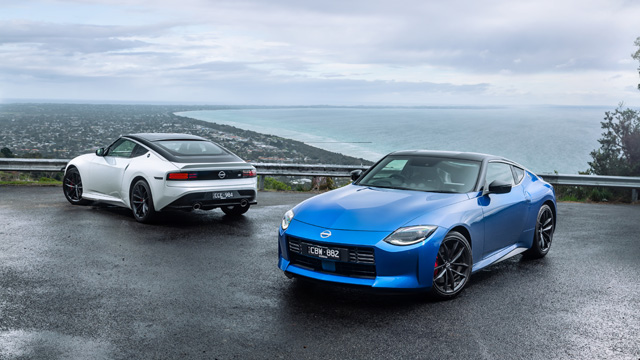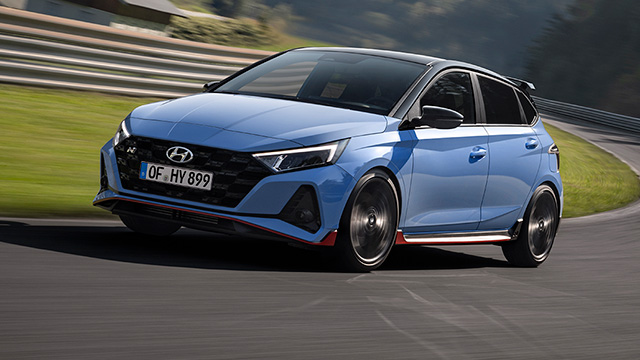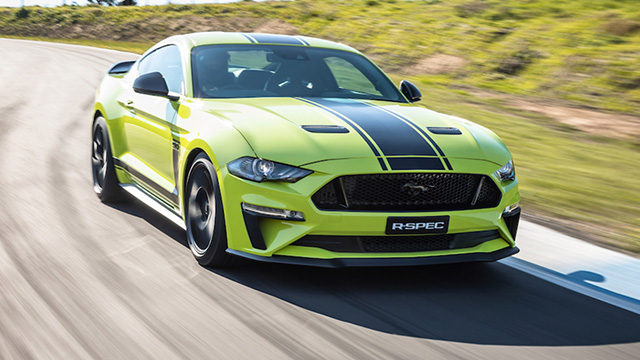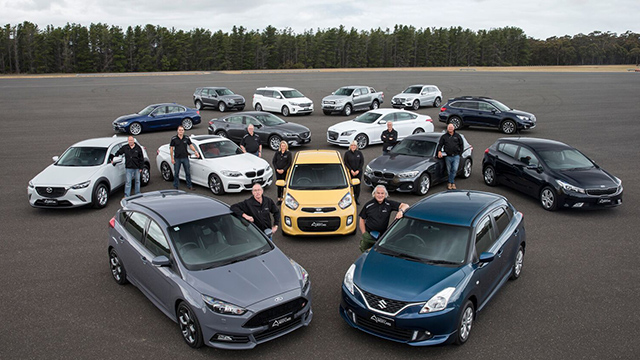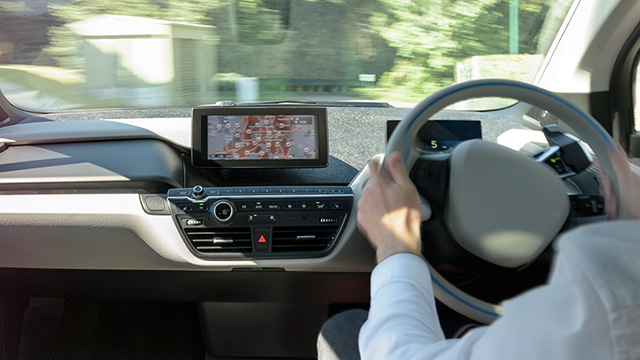Words by Kris Ashton, Tim Pomroy and Adam Smith
Sports cars and EVs dominate as Open Road looks back on motoring in 2023.
When the Open Road team compiles its annual list of best drives, we first skim our memories and then the year’s reviews for vehicles that stood out for one reason or another.
As we put our heads together in late 2023, however, we discovered surprisingly few had left a lasting impression.
Not many pushed the boundaries of performance and refinement or employed notable new technology, and those that did seemed to lack an X-factor or the broadly satisfying experience that marks a great vehicle at any price point.
Loads of good cars came out in 2023, but they were good in the sense that beige is good – sensible, practical, inoffensive, predictable, safe. The Cupra Leon hatch seems to sum it up best; it’s a great looking car and fun to drive, but open the shell and it’s a VW Golf. We’ve seen it all before.
Our final best drives list suggests a subconscious rebellion against ‘more of the same’. Of the six vehicles that made it, four are performance cars – a mirror image of last year’s list that was heavily weighted towards value and practicality.
It’s also interesting to note that three of the six are electric vehicles, suggesting the days when EVs were nothing more than a curiosity or an afterthought are gone. Manufacturers are investing huge sums of money to make them appealing to mainstream consumers, and it shows.
Nissan Z
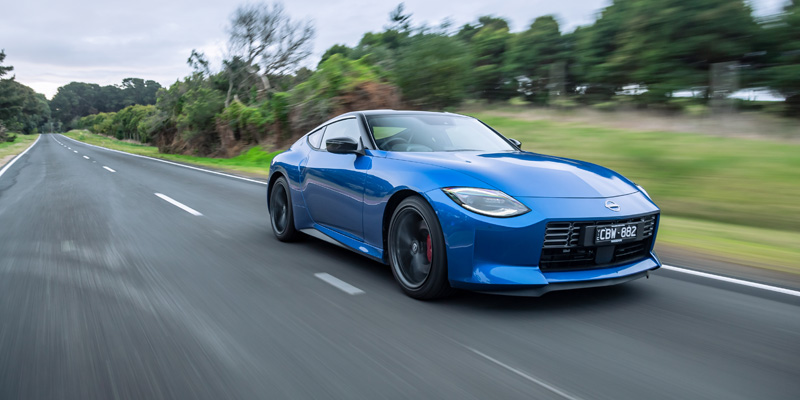
Once in a while, a car transcends the functional and becomes more than transport or a commodity. The designer’s vision is spot-on, engineers bring that vision to life with fidelity, and the production team achieves a harmonious balance between price and quality.
When this happens, the resulting car seems to crackle with energy, exude a presence that a mass-produced paint-by-numbers vehicle never will.
The 2015 Ford Mustang was an excellent example of a car that melded heritage, style, performance and technology in such perfect measure that it became a phenomenon. Eight years later, Nissan worked similar magic with its sixth-generation Z car.
Enthusiasts of the 370Z awaited the new model with clenched fists and a racing heart. First released in 2009, the 370Z spent more than a decade in production and would eventually number among the last holdouts against environmentally mandated turbocharging.
Many were concerned the Z – the first turbo in the model’s 50-year lineage – would struggle to emulate the responsiveness of its naturally aspirated predecessors.
But turbocharging technology has come a long way since the 370Z first rolled out of showrooms and the 3.0-litre twin-turbo in the Z delivered everything performance aficionados loved about the 3.7-litre V6 it replaced and more.
Quiet and composed during everyday driving, when provoked it would unleash 475Nm from a mere 1600rpm, while 298kW arriving further up the rev range ensured it wouldn’t run out of breath, even when accelerating at higher speeds.
But a genuine performance engine in a comparatively small car is only one ingredient in the Z’s appeal. As Ford did with the Mustang, Nissan delivered on the Z’s styling. While the team and I were photographing it for its showdown with the Subaru BRZ, I found I couldn’t stop looking at it.
The sleek liftback lines, the hunkered down stance, the taillight array, the stripped-back yet stylish and sporty interior, even a few tasteful tips of the hat to Z cars of yesteryear; it wasn’t just a sports car, it was a work of art on wheels. It’s easy enough to level criticisms at the Nissan Z.
The twin-turbo V6 is so thirsty one could be sceptical that it’s turbocharged at all, the asking price of $75,000 doesn’t exactly make it a working-class hero, and it’s a non-starter for anyone who has a family or wants to carry more than half a dozen shopping bags.
But such barbs are blunted in the face of the car’s on-road performance and undeniable charisma. This isn’t a car you need. It’s a car you want. – Kris Ashton
Kia EV6 GT
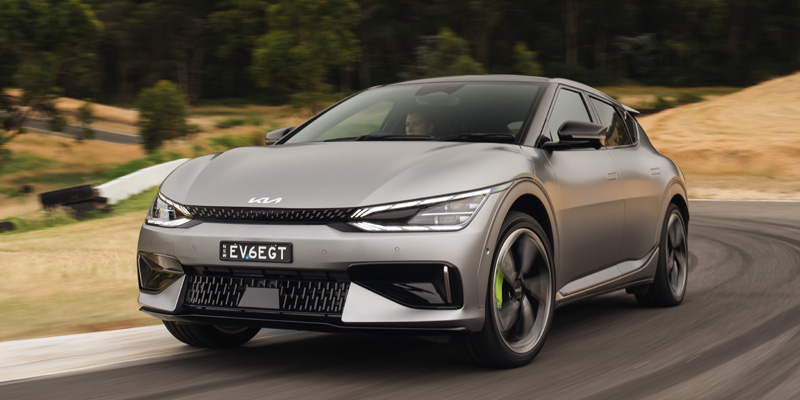
I’m conflicted whenever I get behind the wheel of an EV. My head tells me I should drive with the lightest of touches, just like my dad did back in the day of the Mobilgas Economy Run.
He won events with driving techniques aimed at minimising the car’s fuel consumption, and you need similar discipline to maximise range while driving today’s EVs.
That restraint is blown out of the water when you settle in behind the wheel of Kia’s EV6 GT and even my dad’s feather foot would be tempted.
It’s understandable from a driving enthusiast’s perspective, given the EV6 GT uses dual electric motors to produce a combined output of 430kW and 740Nm, while sticky 21-inch 255/40 Michelin Sport tyres transfer the prodigious power and torque to the tarmac via AWD.
At over 2000kg it’s no lightweight, but that doesn’t stop the EV6 GT covering the 0-100km/h dash in a mere 3.5 seconds. All that torque is unleashed from the get-go, a big point of difference to petrol and diesel performance cars.
Setting the GT apart from Kia’s regular EV6s are electrically controlled suspension dampers, an electronic limited slip differential, and a stronger body with additional bracing around the front and rear suspension mounting points to reduce flexing.
Kia’s local engineers have carefully massaged the suspension set-up to provide the right balance between ride quality and precision through bends.
Driving an EV6 GT over a combination of roads confirms Kia’s good work. Hip-hugging sports seats do their best to prevent you from being pitched into the second row under acceleration and they keep occupants secure through the bends, where the EV6 GT feels surprisingly agile and nimble.
Given the grunt the EV6 GT has at its disposal, a proper set of stoppers is essential. The brake package has been beefed up, fitted with lurid four-piston callipers with 380mm front and 360mm rear brake rotors that receive plenty of ventilation from the dynamic alloy wheels.
A high-performance EV might seem like a contradiction in terms given the reasons for the switch from ICE vehicles to EVs, but just as the traditional market offers a vast array of options, so must EVs if they’re going to gain broader acceptance. The EV6 GT is a great example. – Tim Pomroy
Ford Everest

The second-generation Ford Everest may have been released here back in September 2022, but putting it up against its rivals in a comparison test in our September/October 2023 issue qualifies it among our best drives.
And thank goodness for that, because it deserves accolades over and above those we gave it when the Platinum variant eclipsed the Mitsubishi Pajero Sport GSR and Isuzu MU-X LST in our test.
The Everest shares its rugged underpinnings with the Ford Ranger ute, which is Australia’s highest-selling vehicle according to VFACTS (October 2023).
Its wagon equivalent is no shrinking violet in the popularity contest either, with the Everest cracking the top 10 biggest-selling vehicles for the last two consecutive months.
The Everest’s sales success comes as no surprise, given it combines a family-friendly SUV with off-road mastery and a 3500kg braked towing ability.
The range began with the RWD Ambiente and Trend variants, both sporting a 2.0-litre four-cylinder bi-turbo diesel engine, 10-speed automatic transmission and the option of 4WD.
But it’s the 3.0-litre V6 turbo diesel engine and 4WD set-up in the Sport, later-released Wildtrak (pictured above) and flagship Platinum that has been garnering the most attention.
During our comparison test, high levels of refinement in the 184kW/600Nm V6 made the others’ very capable diesel engines seem like clattering tractors.
It gave the Everest an unmatched impetus and responsiveness, while the roomy cabin remained pleasantly insulated from outside noise, and comfort was prioritised via heated and cooled 10-way driver/front passenger power adjustable seats.
At $77,690, the Platinum had a price premium over the two rivals on test, but it came with a commensurate level of standard kit, including a 12.4-inch digital instrument cluster, 12-inch infotainment screen, 12-speaker Bang & Olufsen audio, wireless Apple CarPlay/Android Auto, heated second-row seats and electrically folding third-row seats.
With satin chrome exterior trim and 21-inch road-biased wheels, the Platinum is the more urban-focused Everest but it can be optioned at no cost with underbody steel protection and 18-inch all-terrain tyres to boost its off-road credentials.
If given the choice, we’d probably go for the Sport variant, with its blacked-out trims better complementing the new generation Everest’s wider and tougher stance, and it being a more affordable path to that smooth and potent V6. – Adam Smith
Audi e-tron GT
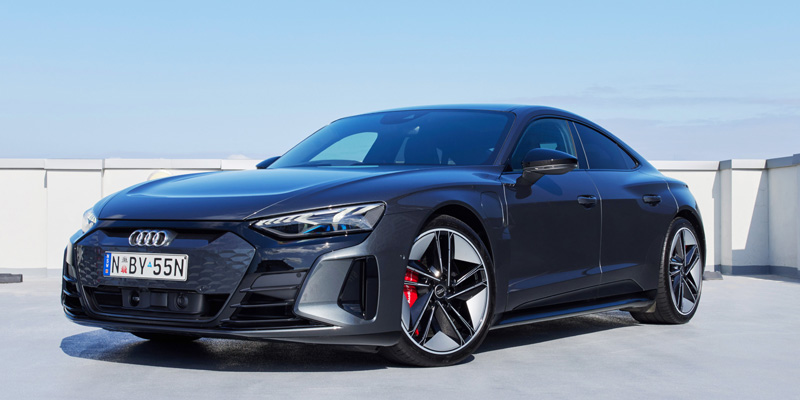
The Open Road motoring team is a little different. Unlike most motoring magazines and websites, you generally won’t see us reviewing Aston Martins, Lamborghinis and the like.
We tend to stick to volume-selling vehicles that our readers might realistically consider buying and we provide practical advice on their purchase. That said, we occasionally get behind the wheel of something special and such a moment came at the start of 2023 during the Audi e-tron GT launch.
Audi’s top of the line EV offers supercar performance while still being a sublime daily driver. Built on the same platform as the Porsche Taycan, its sleek and menacing proportions shun any of that flashy ‘look-at-me’ fanfare but are more than enough to turn curious heads.
Yet there’s nothing subtle about an entry-model price of $180,200, nor the rise to $248,200 for the top-spec RS model. Ticking option boxes such as the ceramic brakes ($12,500) can also send the price skyward and our RS test vehicle came in at $274,650.
Helping convince cashed-up enthusiasts to part with these huge sums are dual electric motors pumping out 350kW and 630Nm, while the RS has a mighty 440kW and 830Nm on hand for a 0-100km/h sprint time of just 3.3 seconds.
That’s not far off an average Formula One car’s 2.6 seconds. Performance is enhanced with all-wheel steering (an option in the base model and standard in the RS) and adaptive air suspension.
The rear spoiler automatically extends at higher speeds and regenerative braking levels are adjustable, but this is not an EV concerned with battery life. The e-tron GT’s interior is sumptuous and elegant, with a panoramic glass roof to keep things bright and airy.
Build quality is light-years away from Audi’s cheaper models, with plush and welcoming electrically adjustable sports seats and generous leg room for rear passengers.
Unfortunately, rear head room is a different story and there’s limited storage space up front, plus battery range (up to a claimed 540km using less reliable NEDC methodology) isn’t amazing when stacked up against some other EVs.
But any minor shortcomings are easy to forgive in a car with the power to seduce even the most hardened EV sceptic. The Audi e-tron GT is luxurious, ridiculously fun to drive, and a fitting replacement for the R8 as Audi’s halo performance vehicle. – Adam Smith
Honda Civic Type R
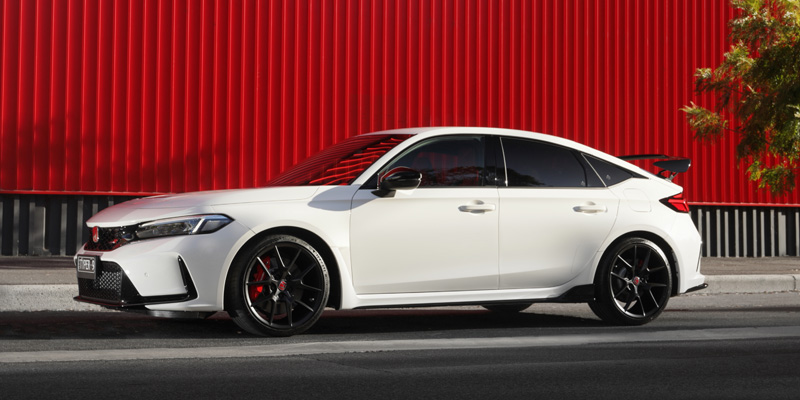
Honda has had a busy 12 months, refreshing much of its line-up with new products and launching the ZR-V mid-sized SUV, its first new model in 20 years. The sixth-generation Civic Type R re-entered our market mid-2023 with only a modicum of fanfare, rounding out the upgraded Civic range.
Since its launch back in 2007, the Type R has been in and out of the line-up, but excitement for it has never dampened and canny enthusiasts that were prepared to wait have been rewarded with arguably the best model to date.
A $72,600 drive-away price certainly hasn’t slowed its momentum either, nor has the fact it’s FWD when many similar performance drives are AWD.
Honda is renowned for its technical prowess in harnessing gobs of power and torque through the front wheels, and that’s one factor that’s draws enthusiasts to the Type R.
It provides the perfect template for a FWD hot hatch and there’s much to like about the latest iteration of Honda’s four-cylinder 2.0-litre turbocharged VTEC engine. The package develops 235kW and 420Nm (up 7kW and 20Nm from the outgoing model), with maximum torque starting at 2600rpm.
A lightweight forged steel crankshaft and hollow camshafts allow the engine to sing with a free-spinning nature.
While some turbo engines have split personalities – they’re quiet and docile until the turbo spools up and all hell breaks loose – the Type R’s linear powerband delivers a strong consistent surge through to the 6500rpm limit.
A carefully chosen set of gear ratios in the six-speed manual complements the power delivery. All this power would be of little use if the chassis and suspension weren’t up to the task, and Honda has a multi-faceted solution.
A limited slip differential handles engine torque loads, while the front suspension uses forged alloy steering knuckles, lower control arms and special 19-inch alloys to maximise the wide 265/30R series Michelin tyres’ footprint through corners.
Adaptive dampers have four options to select, including individual mode where the driver can tailor engine response and steering weighting to a suspension setting appropriate to the driving conditions.
It’s a taut unit through the bends, remaining laser-like in focus, and only when accelerating out of corners with uneven bitumen does the Type R become fidgety. Dab the Brembo brakes and they shave off momentum with repeated assuredness.
In suburbia the Type R is as relaxed as any of its siblings, albeit with a firmer ride. The light controls and Honda’s typically well-thought-out ergonomics make it a realistic option as a daily driver. – Tim Pomroy
BYD Atto 3
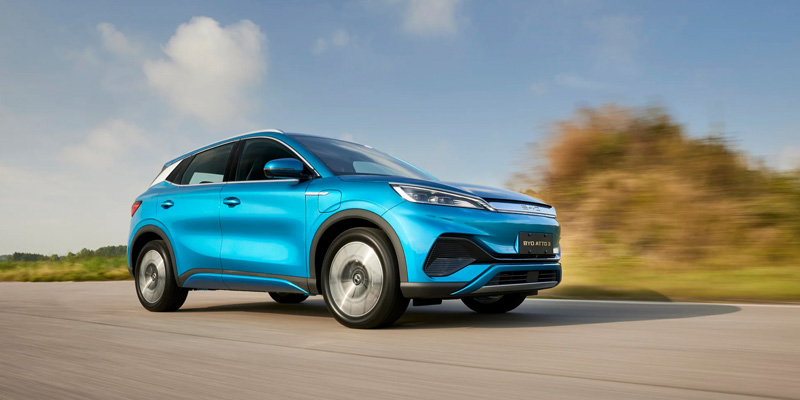
When the Open Road team sits down to discuss its best drives list there are always some left-field suggestions thrown into the mix. Most end up discarded, but one that had the requisite X-factor was BYD’s Atto 3 SUV.
Launched at the tail end of 2022 into the competitive mid-size SUV segment, the Atto 3 has already made a name for itself, leapfrogging many established players while only offered as an EV.
Sharp pricing helps, and the standard range model starts at $48,011 (right in the mix of affordable EVs currently available), with a 50kWh battery that’s good for 345km between charges. The extended range, with a larger 60kWh battery delivering 420km, is worth the extra $3000 just for peace of mind.
Both models enjoy a five-star ANCAP safety rating, putting to bed the idea that Chinese brands often short-change consumers on safety.
BYD also uses its own blade-style battery instead of the more common block type, which the company says makes it more stable and safer in the event of an accident. Visually the Atto 3 stands out with clean lines and a squat stance emphasised with large 18-inch alloys.
BYD’s design studio is headed by a former Audi design chief, an appointment clearly paying dividends, though his restraint didn’t extend to the interior, which is a touch overdone.
There are a couple of party tricks on offer, such as the rotating 12.8-inch touchscreen with functionality more intuitive than some of the competition, and soft and tactile two-tone faux leather trim on the seat facings.
The chassis needs further development, though, if the Atto 3 is going to challenge the leading ICE-powered mid-size SUVs. A better choice of springs and dampers and attention to the vague steering would be a good start.
To be fair, the ride quality over most surfaces is excellent and, for the target market, more important. A 150kW/350Nm electric motor drives through the front wheels and provides an edge in performance over many of its peers.
There’s plenty of zip under throttle and the Atto 3 features a mild form of brake regeneration. I’d like to see a range of settings including a more aggressive setting that allows one-pedal driving. While it’s far from perfect, there’s a kernel to the Atto 3’s design that leaves a lasting impression.
Although we drove many more comprehensive vehicles over the past year, the Atto 3 delivered an enjoyable experience – and that’s often all that’s needed. – Tim Pomroy







